
Joomla is a free and open-source content management system (CMS), which enables you to build web sites and powerful online applications. Joomla is one of the most popular CMS thanks to its global community of developers and volunteers who make sure the platform is user friendly, extendable, multilingual, accessible, responsive, search engine optimized and so much more. In this step by step guide I will show you how to install Joomla on your Synology NAS using Docker & Portainer.
STEP 1
Please Support My work by Making a Donation.
STEP 2
Install Portainer using my step by step guide. If you already have Portainer installed on your Synology NAS, skip this STEP. Attention: Make sure you have installed the latest Portainer version.
STEP 3
Make sure you have a synology.me Wildcard Certificate. Follow my guide to get a Wildcard Certificate. If you already have a synology.me Wildcard certificate, skip this STEP.
STEP 4
Go to Control Panel / Login Portal / Advanced Tab / click Reverse Proxy. Follow the instructions in the image below.
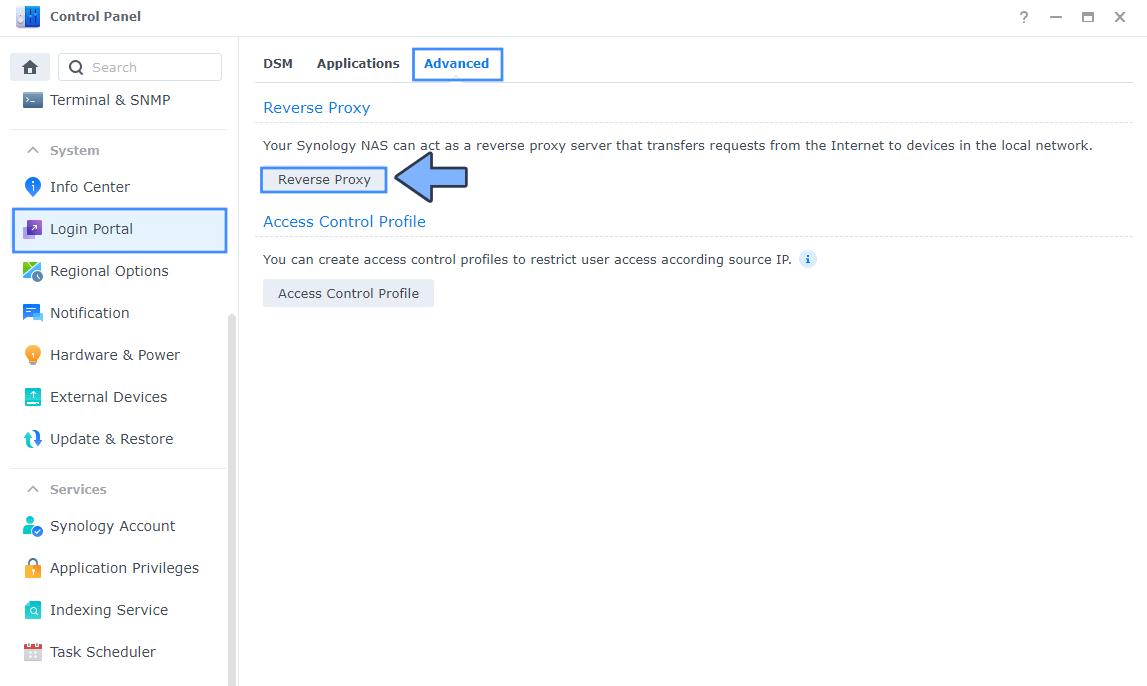
STEP 5
Now click the “Create” button. Follow the instructions in the image below.
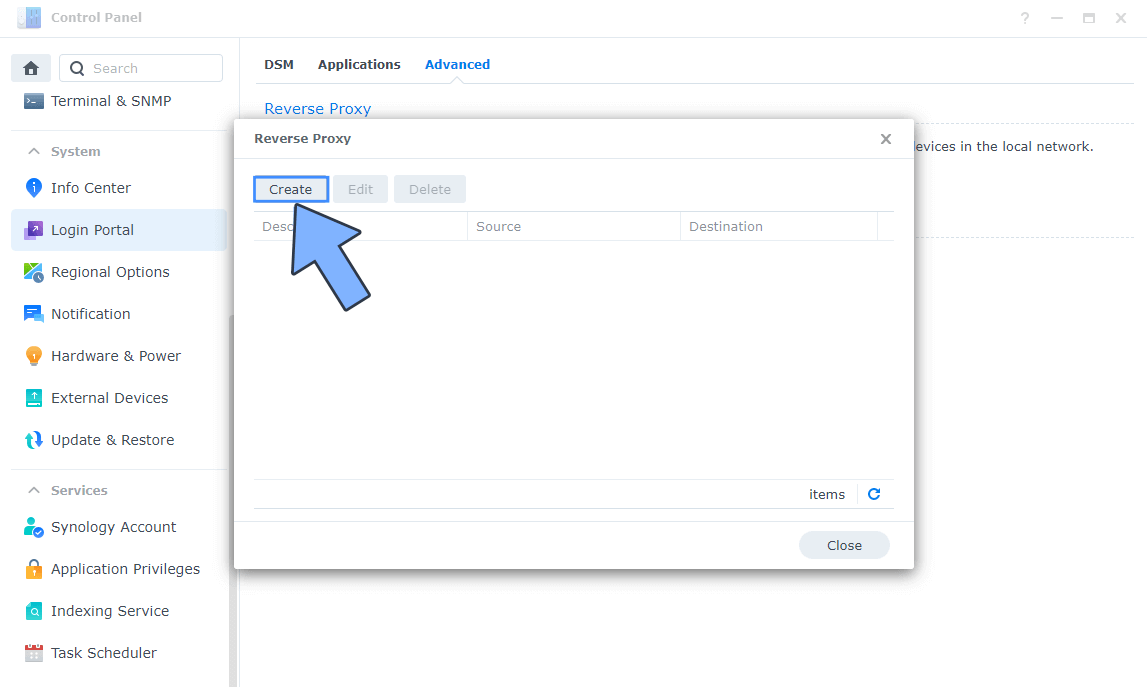
STEP 6
After you click the Create button, the window below will open. Follow the instructions in the image below.
On the General area, set the Reverse Proxy Name description: type in Joomla. After that, add the following instructions:
Source:
Protocol: HTTPS
Hostname: joomla.yourname.synology.me
Port: 443
Check Enable HSTS
Destination:
Protocol: HTTP
Hostname: localhost
Port: 8187
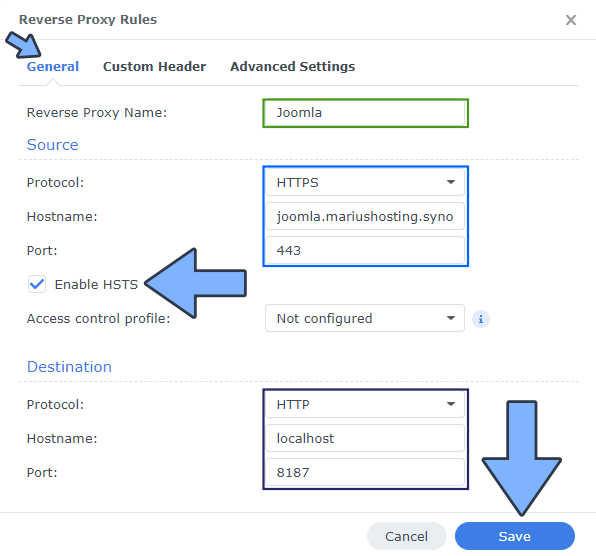
STEP 7
On the Reverse Proxy Rules click the Custom Header tab. Click Create and then, from the drop-down menu, click WebSocket. After you click on WebSocket, two Header Names and two Values will be automatically added. Click Save. Follow the instructions in the image below.

STEP 8
Go to Control Panel / Network / Connectivity tab/ Check Enable HTTP/2 then click Apply. Follow the instructions in the image below.
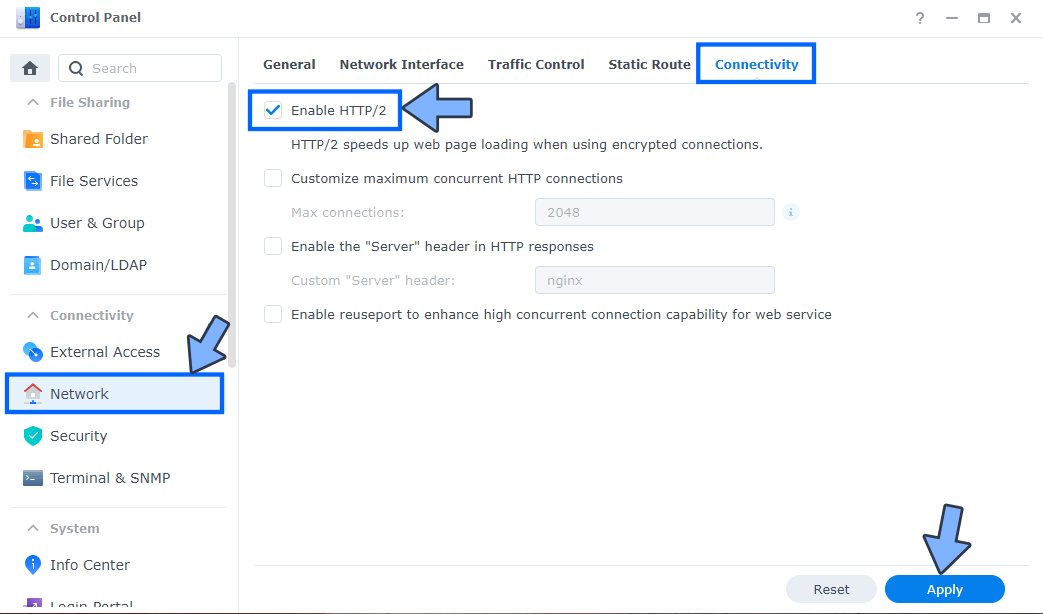
STEP 9
Go to Control Panel / Security / Advanced tab/ Check Enable HTTP Compression then click Apply. Follow the instructions in the image below.
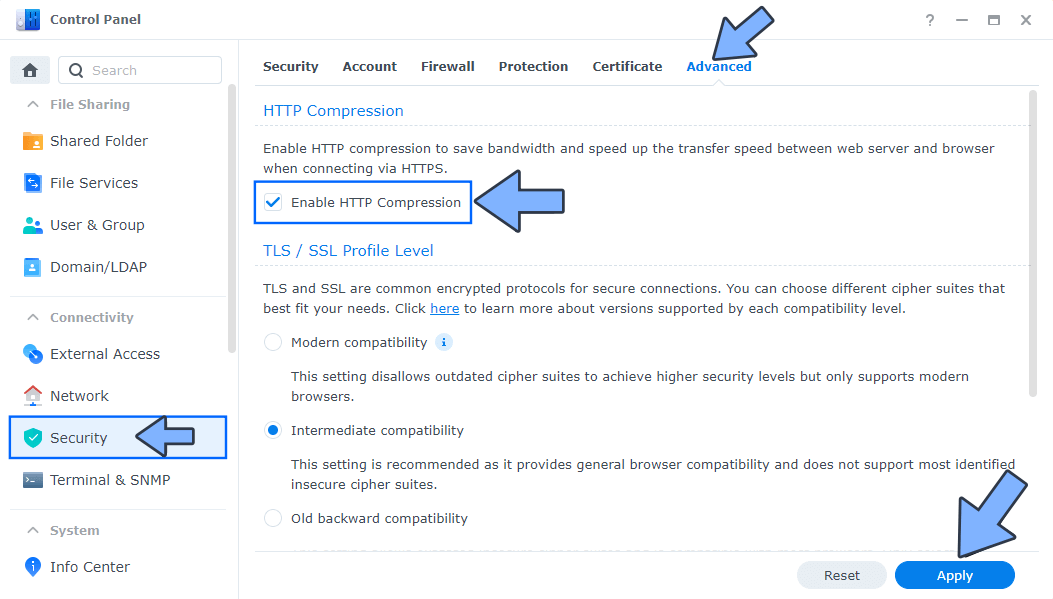
STEP 10
Go to File Station and open the docker folder. Inside the docker folder, create one new folder and name it joomla. Follow the instructions in the image below.
Note: Be careful to enter only lowercase, not uppercase letters.
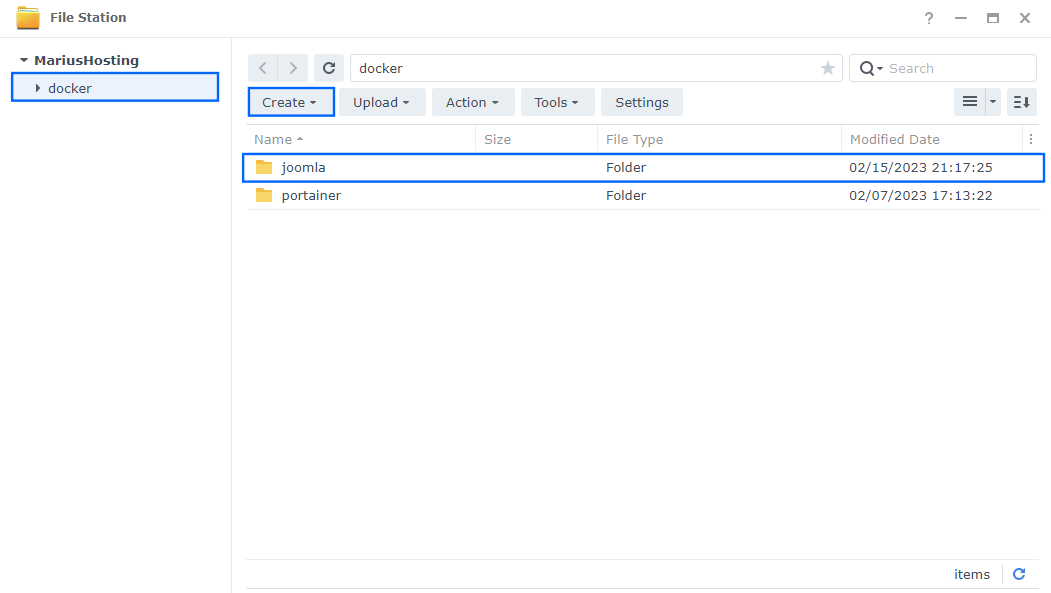
STEP 11
Now create two new folders inside the joomla folder that you created at STEP 10 and name them db and phpini. Follow the instructions in the image below.
Note: Be careful to enter only lowercase, not uppercase letters.

STEP 12
Download (click on the blue link below), unzip, then upload the php.ini file below in the phpini folder that you have previously created at STEP 11. Follow the instructions in the image below. 🔒Note: Support my work to unlock the password. You can use this password to download any file on mariushosting forever!
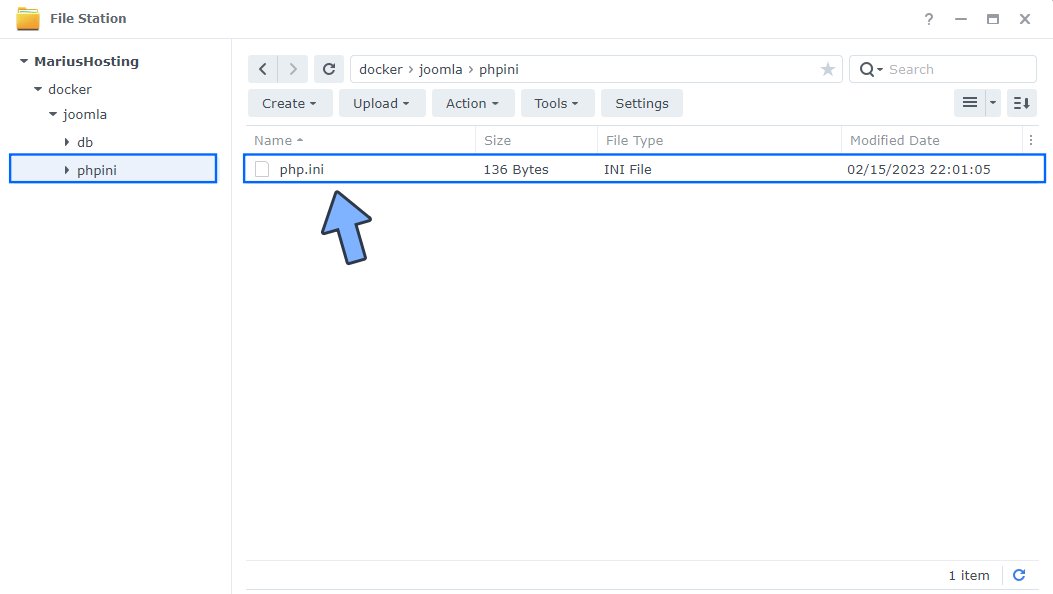
STEP 13
Log into Portainer using your username and password. On the left sidebar in Portainer, click on Stacks then + Add stack. Follow the instructions in the image below.

STEP 14
In the Name field type in joomla. Follow the instructions in the image below.
services:
joomla:
image: joomla
container_name: Joomla
hostname: joomla
healthcheck:
test: curl -f http://localhost:80/ || exit 1
ports:
- 8187:80
depends_on:
db:
condition: service_started
phpmyadmin:
condition: service_healthy
volumes:
- /volume1/docker/joomla:/var/www/html:rw
- /volume1/docker/joomla/phpini/php.ini:/usr/local/etc/php/php.ini:rw
environment:
JOOMLA_DB_HOST: db
JOOMLA_DB_USER: marius
JOOMLA_DB_PASSWORD: mariuspassword
JOOMLA_DB_NAME: mariushosting_db
restart: on-failure:5
db:
image: mariadb:11.4-noble #LTS Long Time Support Until May 29, 2029.
container_name: Joomla-DB
security_opt:
- no-new-privileges:false
hostname: joomla-db
environment:
MYSQL_DATABASE: mariushosting_db
MYSQL_USER: marius
MYSQL_PASSWORD: mariuspassword
MYSQL_ROOT_PASSWORD: rootpass
TZ: Europe/Bucharest
volumes:
- /volume1/docker/joomla/db:/var/lib/mysql:rw
restart: on-failure:5
phpmyadmin:
image: phpmyadmin
hostname: joomla-phpmyadmin
healthcheck:
test: curl -f http://localhost:80/ || exit 1
container_name: Joomla-phpMyAdmin
depends_on:
db:
condition: service_started
ports:
- 2505:80
environment:
PMA_HOST: joomla-db
PMA_PORT: 3306
restart: on-failure:5
Note: Before you paste the code above in the Web editor area below, change the values for JOOMLA_DB_USER and MYSQL_USER. Type in your own username for both values; they have to be identical. marius is an example for a user.
Note: Before you paste the code above in the Web editor area below, change the value for JOOMLA_DB_PASSWORD and MYSQL_PASSWORD. Type in your own password for both values; they have to be identical. mariuspassword is an example for a password.
Note: Before you paste the code above in the Web editor area below, change the value for JOOMLA_DB_NAME and MYSQL_DATABASE. Type in your own database name for both values; they have to be identical. mariushosting_db is an example for a database name.
Note: Before you paste the code above in the Web editor area below, change the value for TZ. (Select your current Time Zone from this list.)
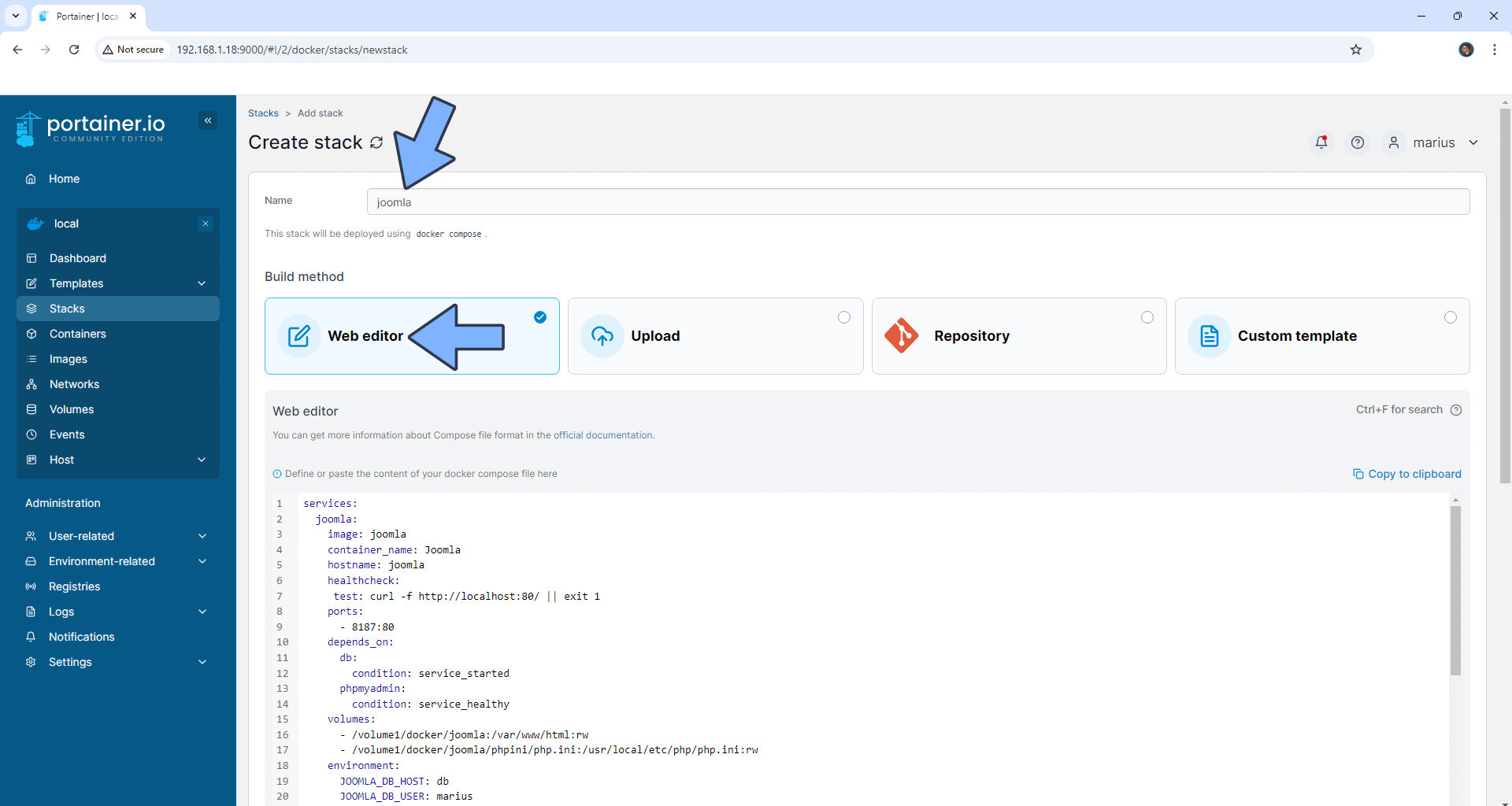
STEP 15
Scroll down on the page until you see a button named Deploy the stack. Click on it. Follow the instructions in the image below. The installation process can take up to a few minutes. It will depend on your Internet speed connection.
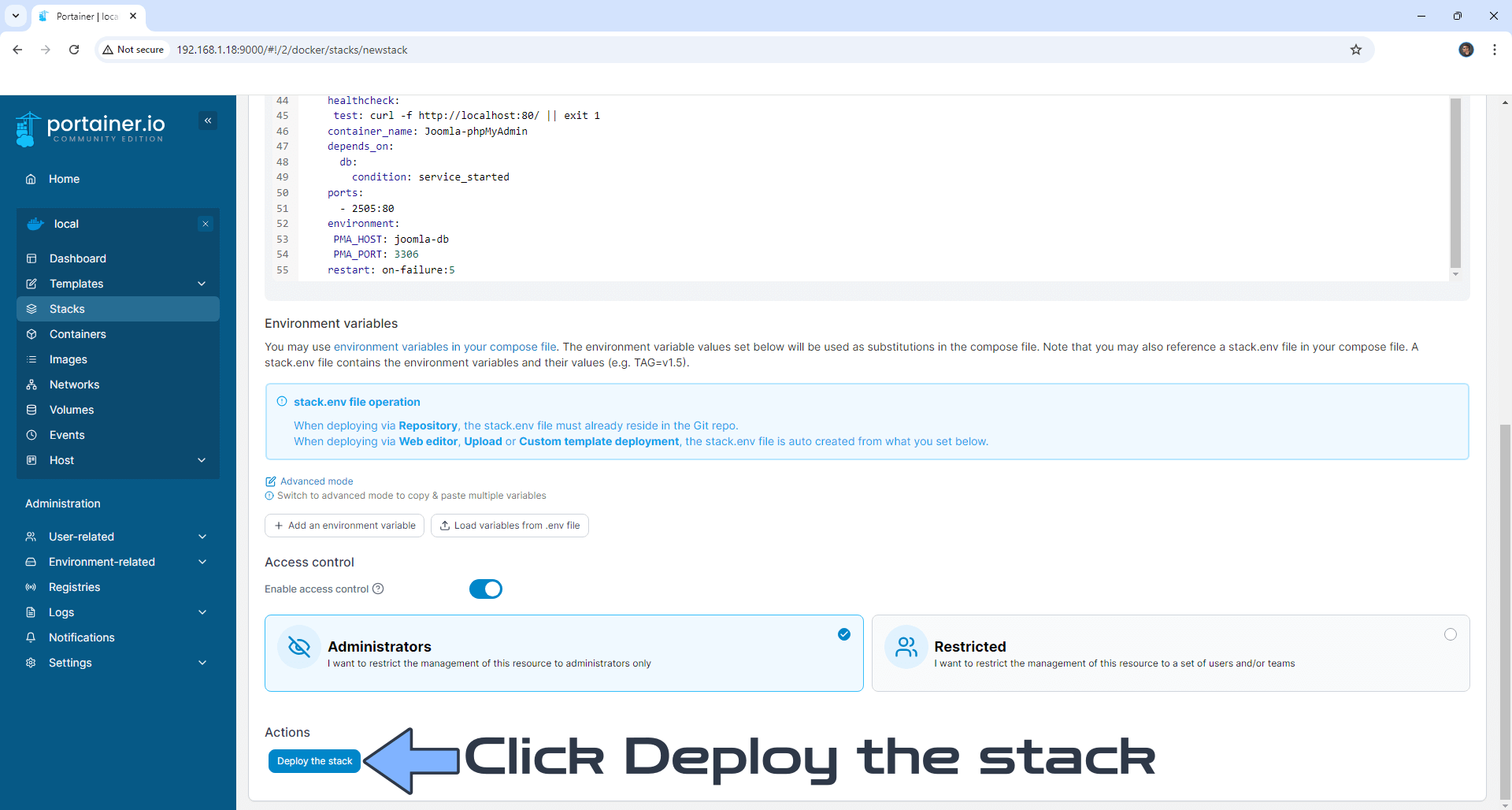
STEP 16
If everything goes right, you will see the following message at the top right of your screen: “Success Stack successfully deployed“.
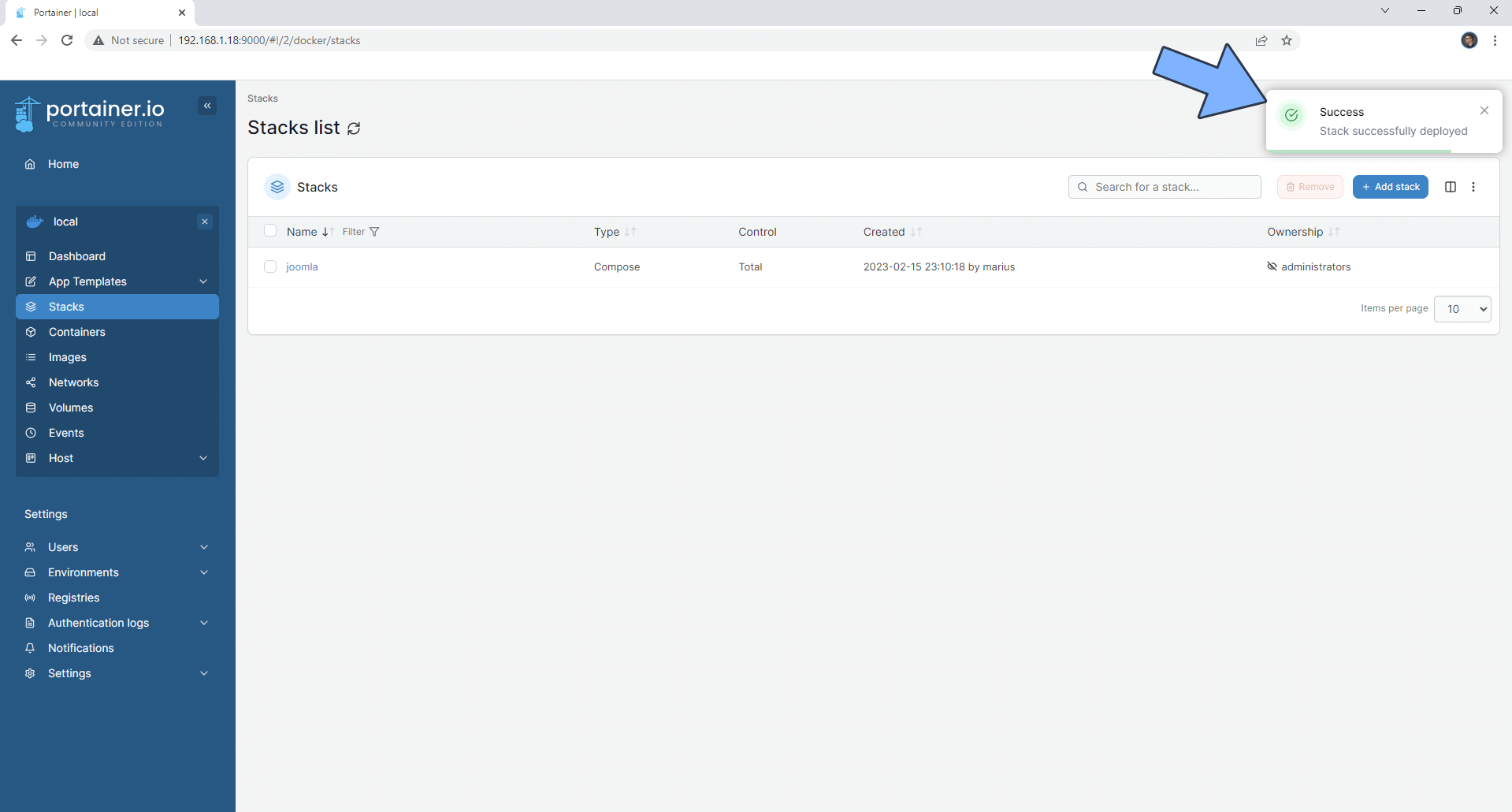
STEP 17
Go back to STEP 1 or you will deal with karma 🙂.
STEP 18
Now open your browser and type in your HTTPS/SSL certificate like this https://joomla.yourname.synology.me In my case it’s https://joomla.mariushosting.synology.me If everything goes right, you will see the Joomla installation page. Select your language then type in a website name. Click Setup Login Data. Follow the instructions in the image below.
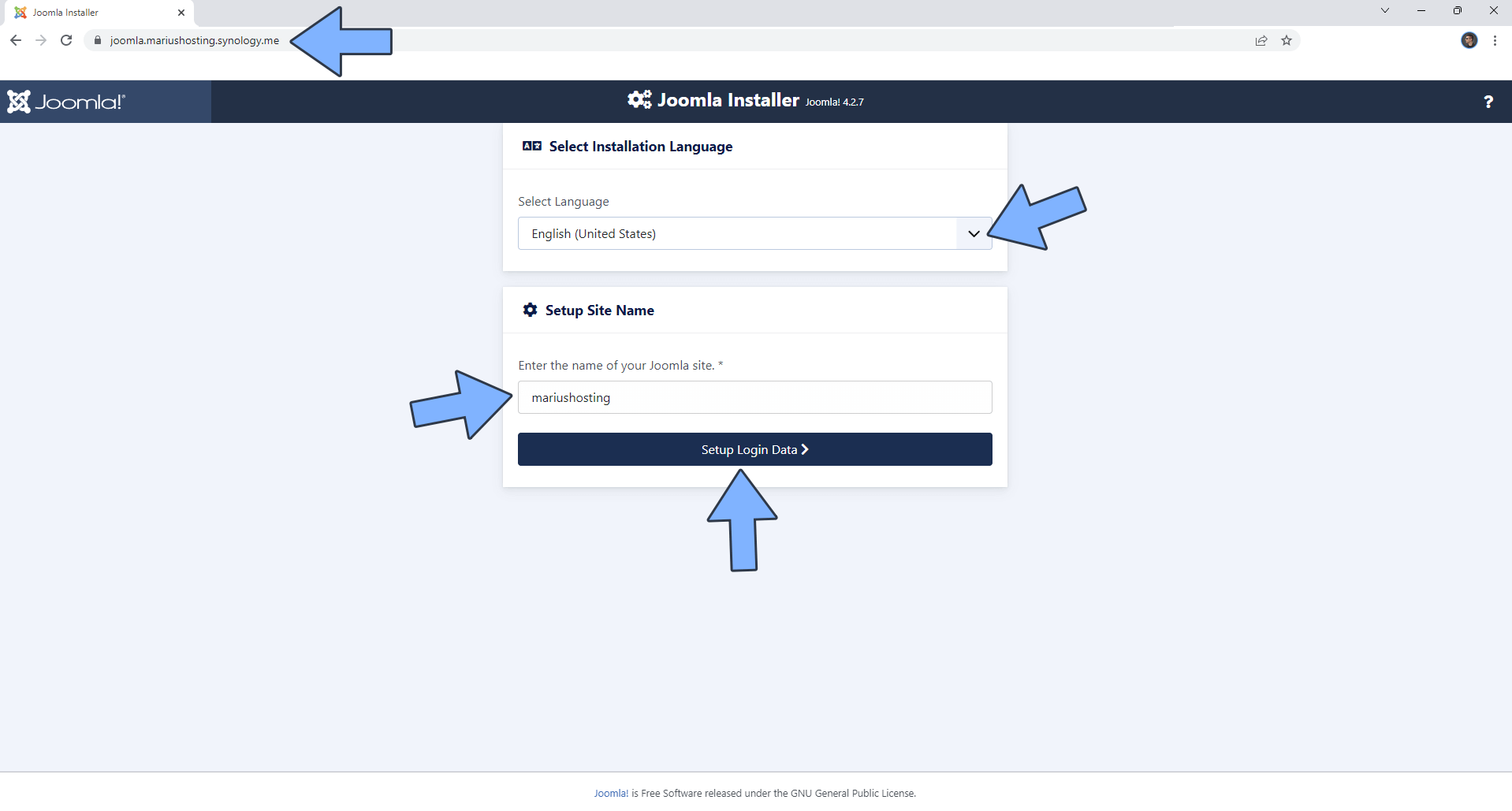
STEP 19
Type in your own Name, Username, Password and Email. Click Setup Database Connection. Follow the instructions in the image below.
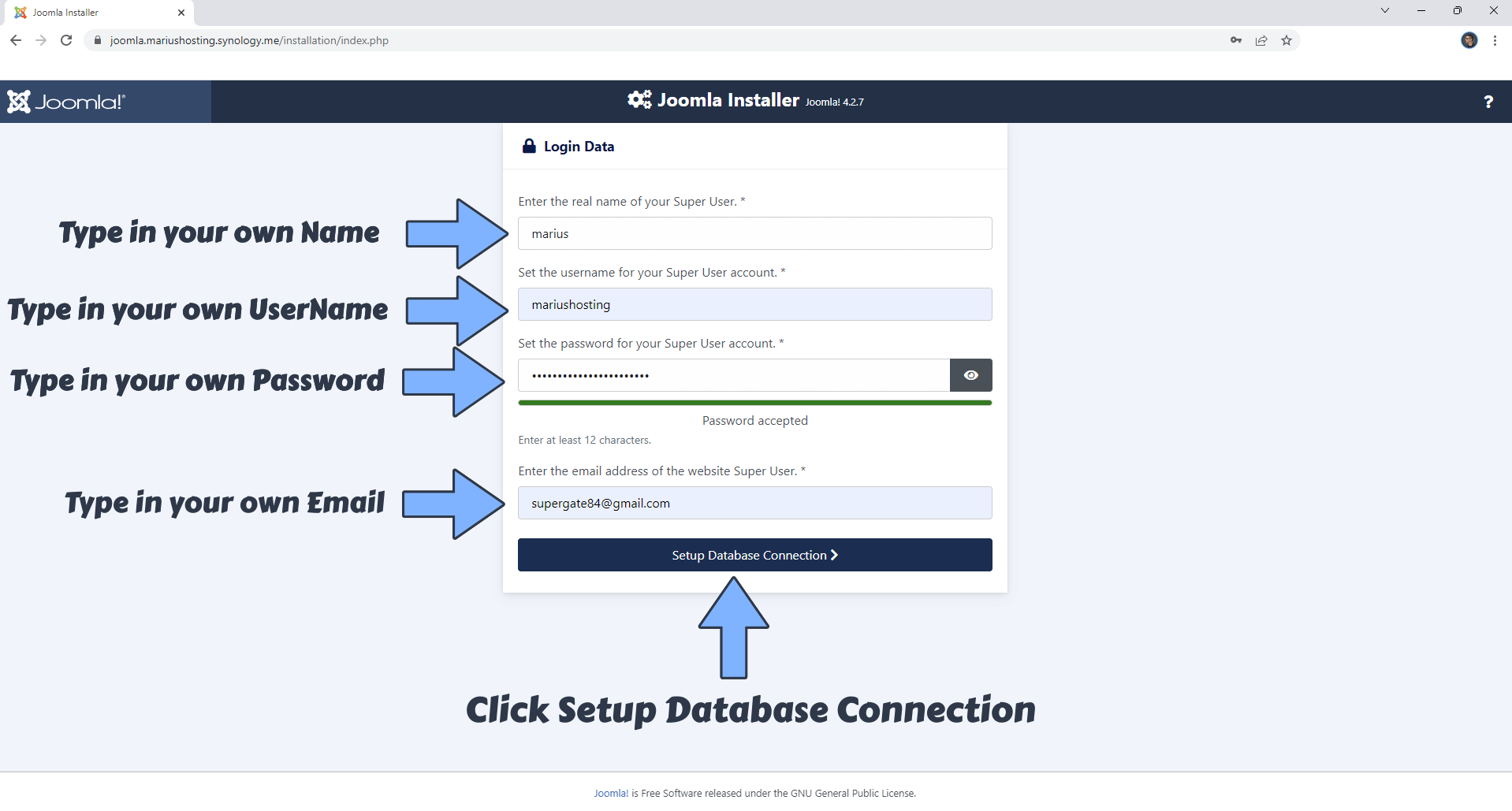
STEP 20
Add the Database details below then click Install Joomla. Follow the instructions in the image below.
Database Type: MySQLi
Database User: Your own database user. STEP 14.
Database Password: Your own database password. STEP 14.
Database Name: Your own database name. STEP 14.
Table Prefix: Will be automatically generated.
Connection Encryption: Default (server controlled).
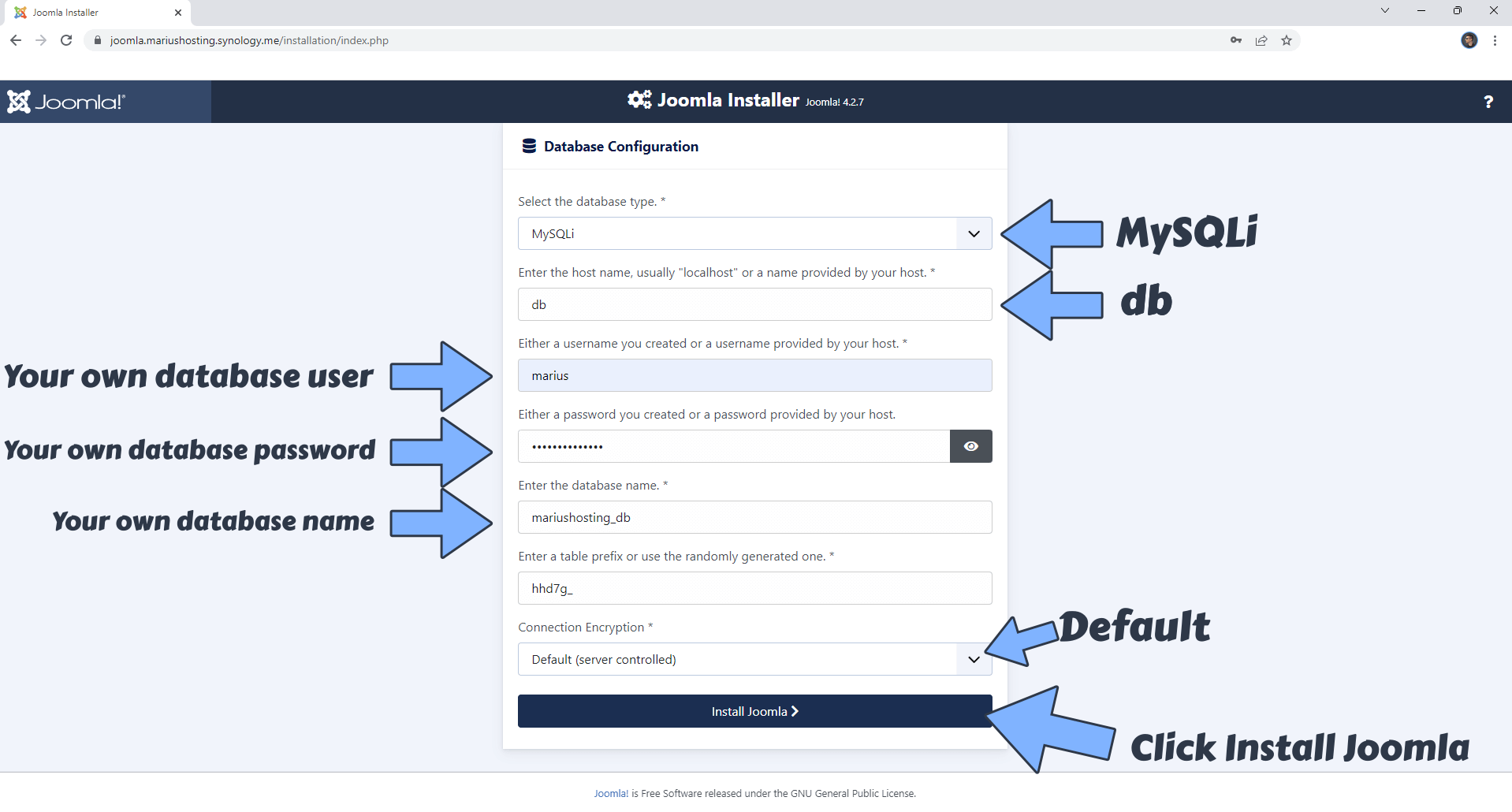
STEP 21
Wait a couple minutes for the installation to be completed.
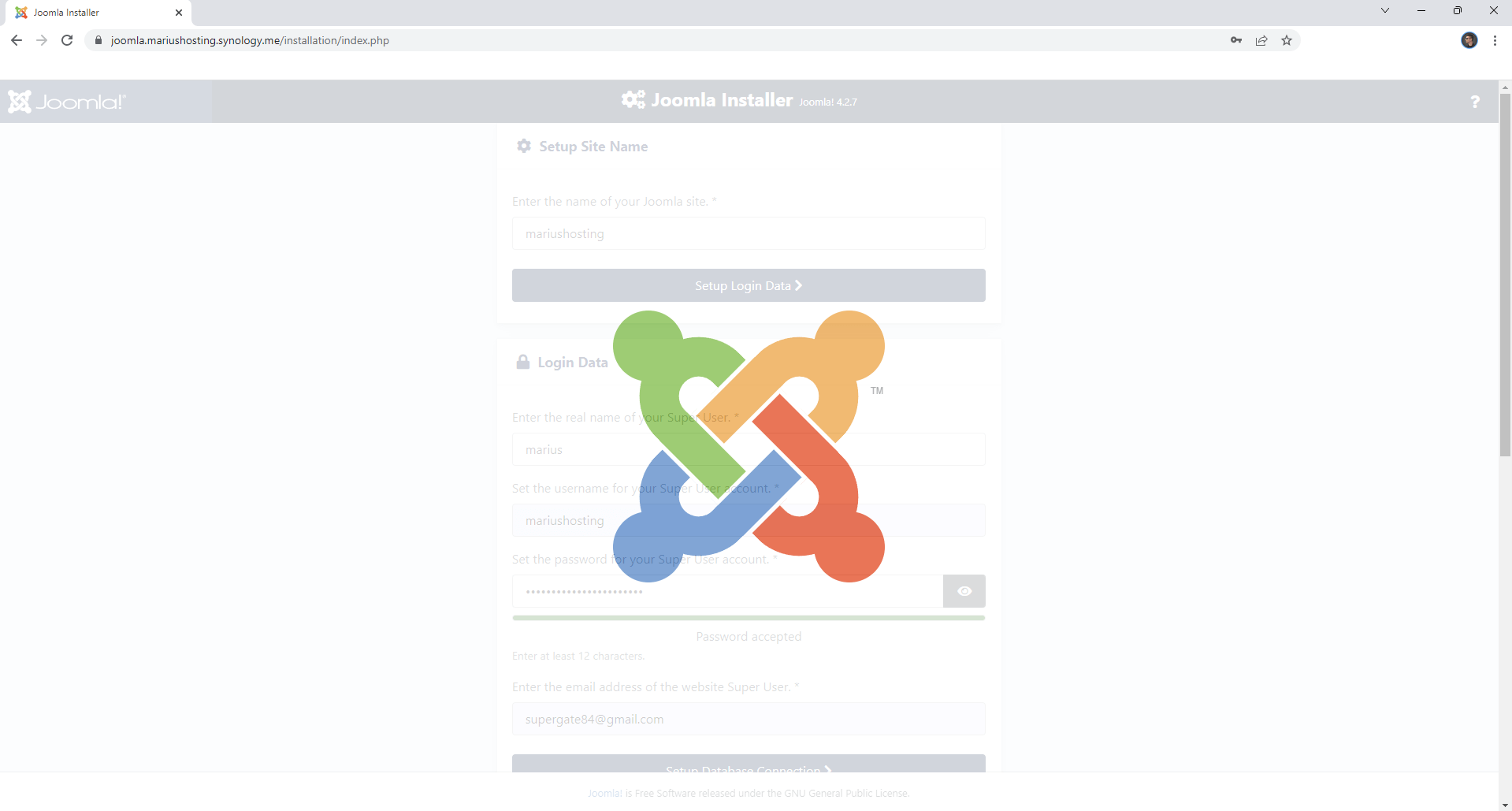
STEP 22
Click Open Administrator. Follow the instructions in the image below.
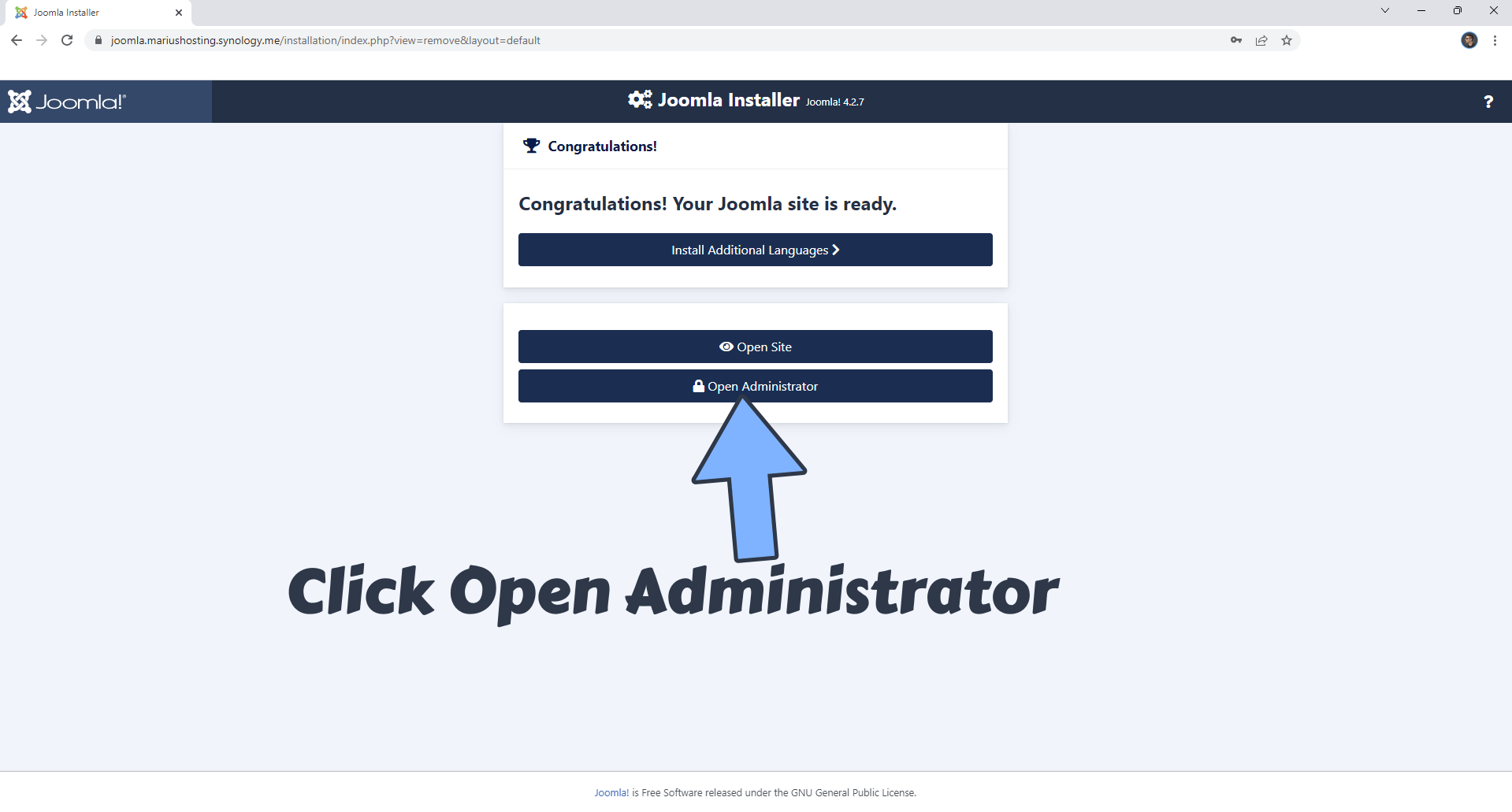
STEP 23
Type in your own Username and Password that you have previously created at STEP 19. Click Log in. Follow the instructions in the image below.
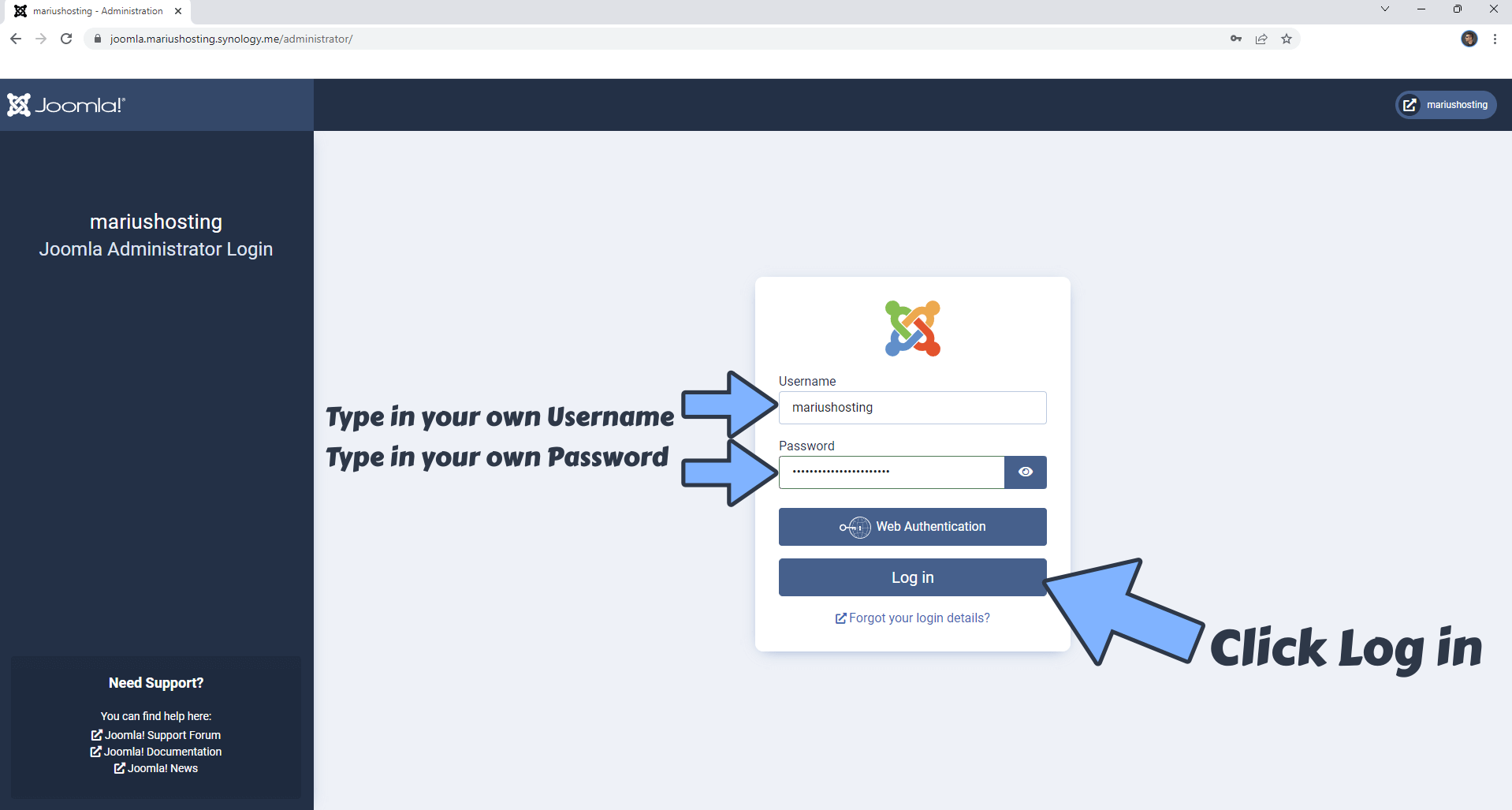
STEP 24
On the left sidebar click System then Global Configuration. Follow the instructions in the image below.
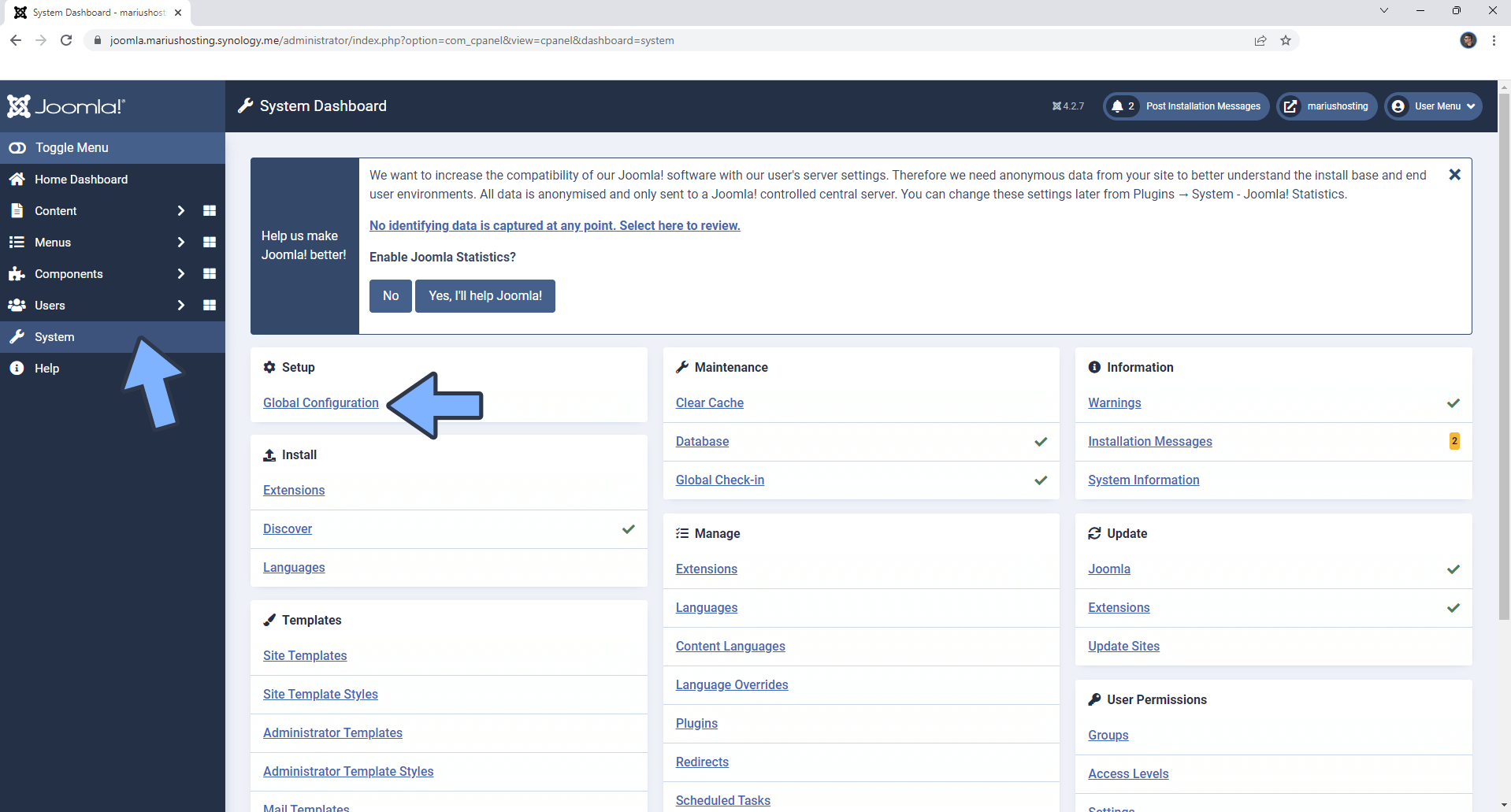
STEP 25
Click the Server tab. Activate Gzip Page Compression. Force HTTPS for Entire Site. Click Save & Close. Follow the instructions in the image below.
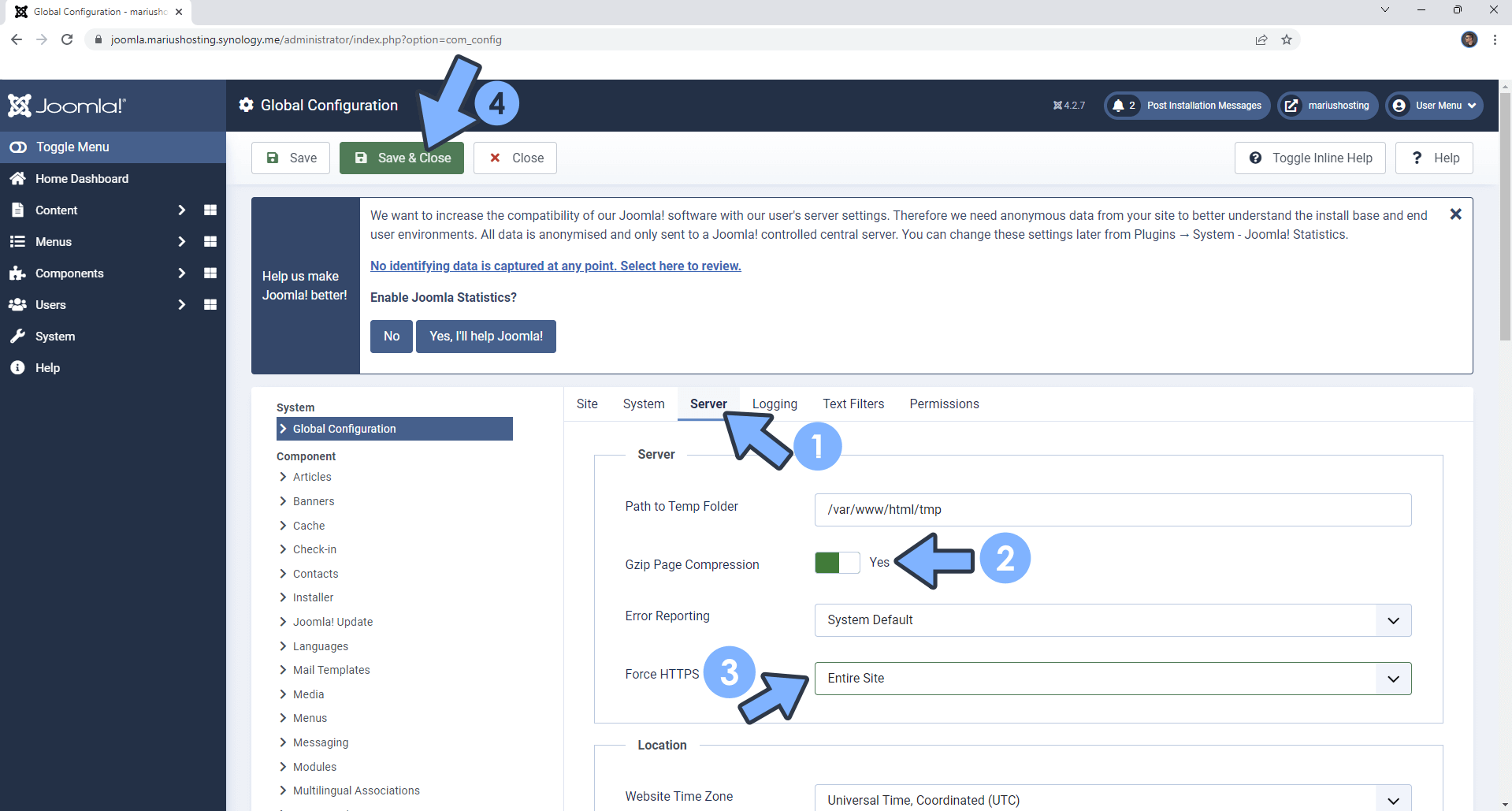
STEP 26
Your Joomla Administrator Dashboard at a glance!

STEP 27
Set Up Email Notifications on Joomla.
STEP 28
phpMyAdmin is the graphical interface for the MariaDB database. It will help you connect to your database. Open your browser and type in http://Synology-ip-address:2505 Connect to your MariaDB using root as Username and rootpass as Password. Click Log in. Follow the instructions in the image below.
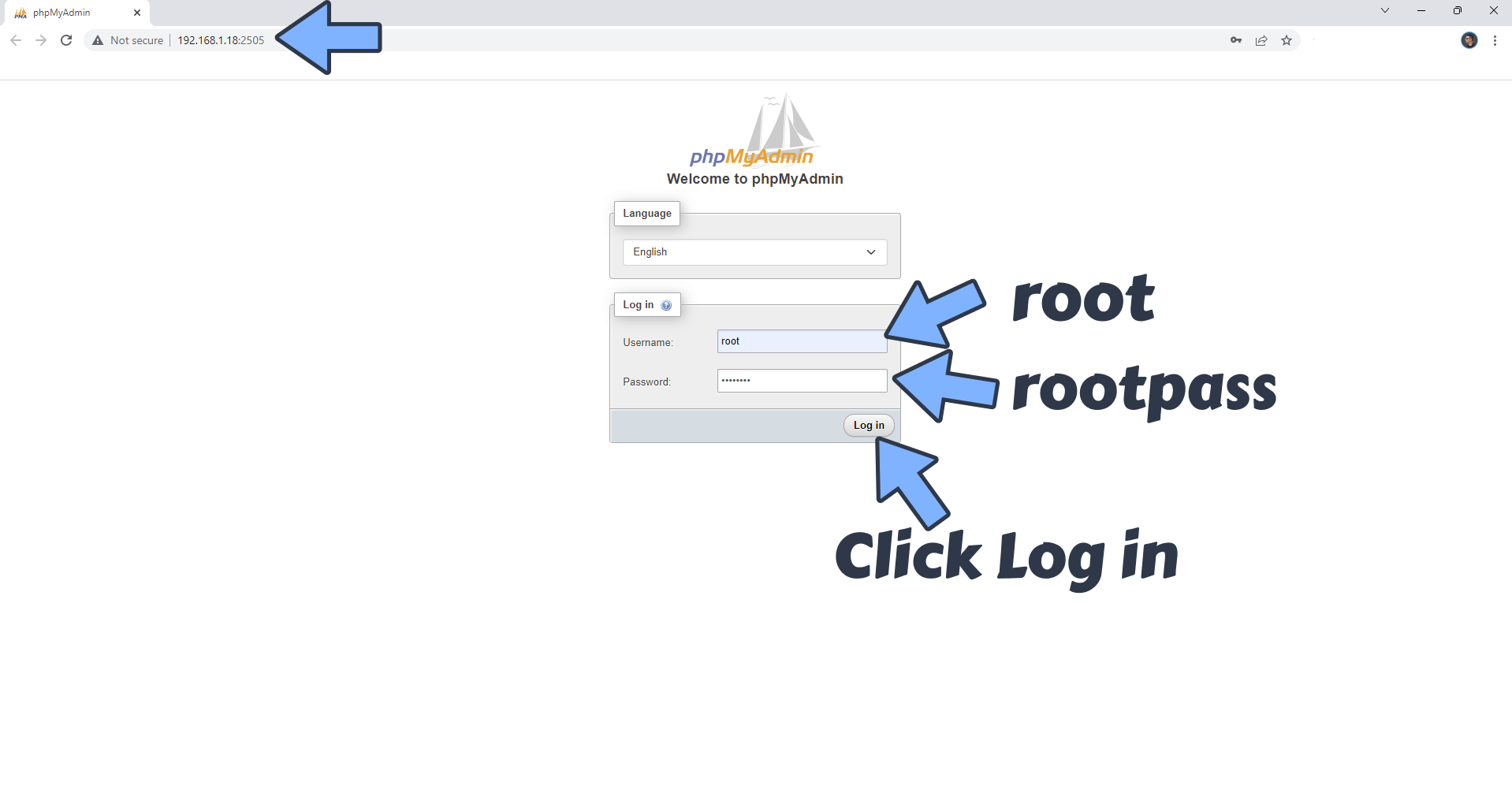
STEP 29
You can now download and back up your Joomla database without needing to install any backup plugin on your Joomla website.
⚠️Warning: Do not expose the phpMyadmin instance to the Internet via Reverse Proxy. You can do it by using a strong password, but it’s not recommended to expose it. Keep it local.
Note: Fix the error message: The phpMyAdmin configuration storage is not completely configured.
Note: Find out how to backup your Joomla database using phpMyAdmin.
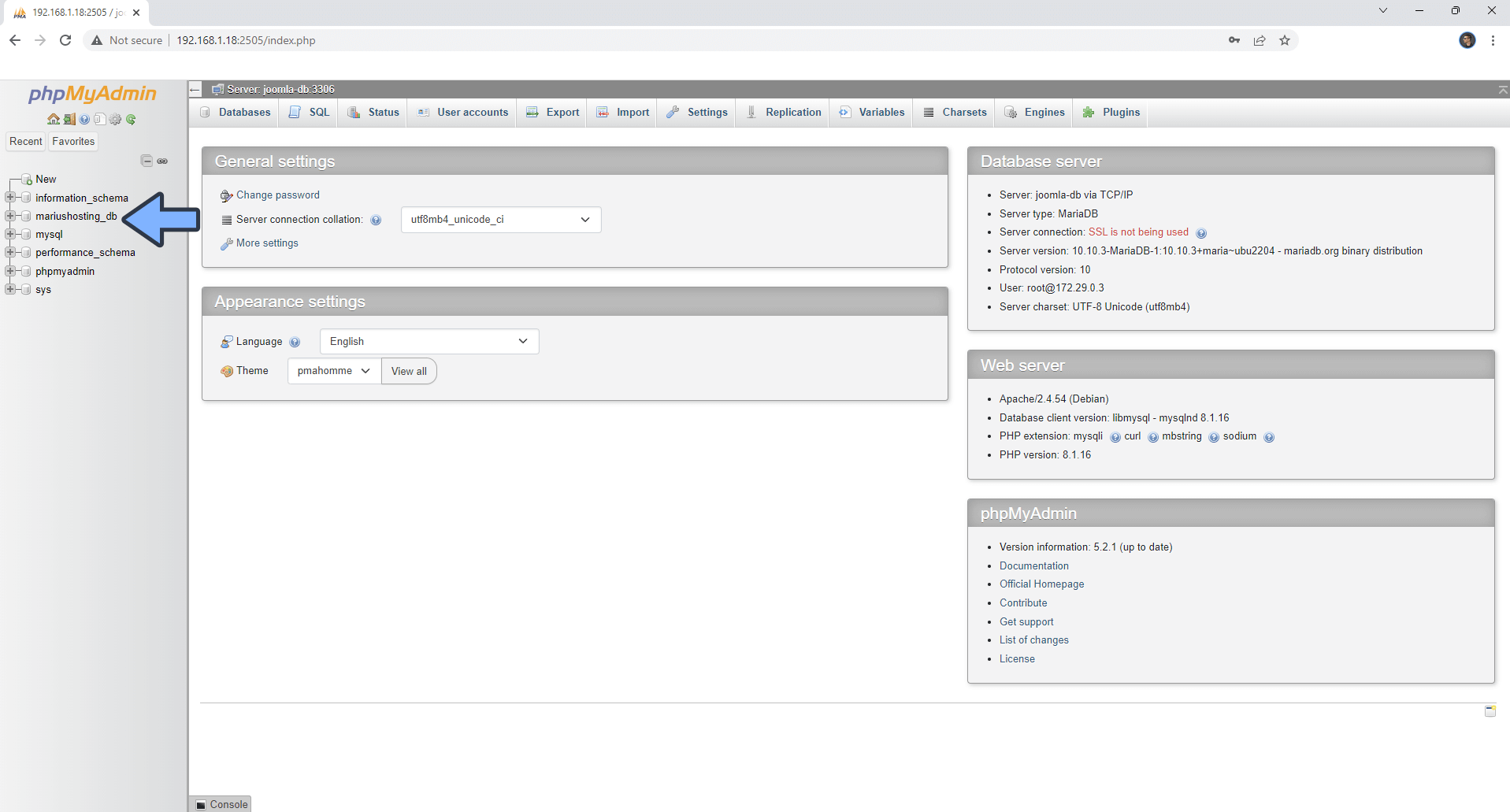
Enjoy Joomla!
Note: Your live website will be at https://joomla.yourname.synology.me and your administrator dashboard will be at https://joomla.yourname.synology.me/administrator
Note: Can I run Docker on my Synology NAS? See the supported models.
Note: How to Back Up Docker Containers on your Synology NAS.
Note: Find out how to update the Joomla container with the latest image.
Note: How to Free Disk Space on Your NAS if You Run Docker.
Note: You can also use your own domain name, but in this case there are some additional STEPS needed, so it’s better to contact me.
Note: How to Schedule Start & Stop For Docker Containers.
Note: How to Activate Email Notifications.
Note: How to Add Access Control Profile on Your NAS.
Note: How to Change Docker Containers Restart Policy.
Note: How to Use Docker Containers With VPN.
Note: Convert Docker Run Into Docker Compose.
Note: How to Clean Docker.
Note: How to Clean Docker Automatically.
Note: Best Practices When Using Docker and DDNS.
Note: Some Docker Containers Need WebSocket.
This post was updated on Monday / June 30th, 2025 at 7:23 PM
